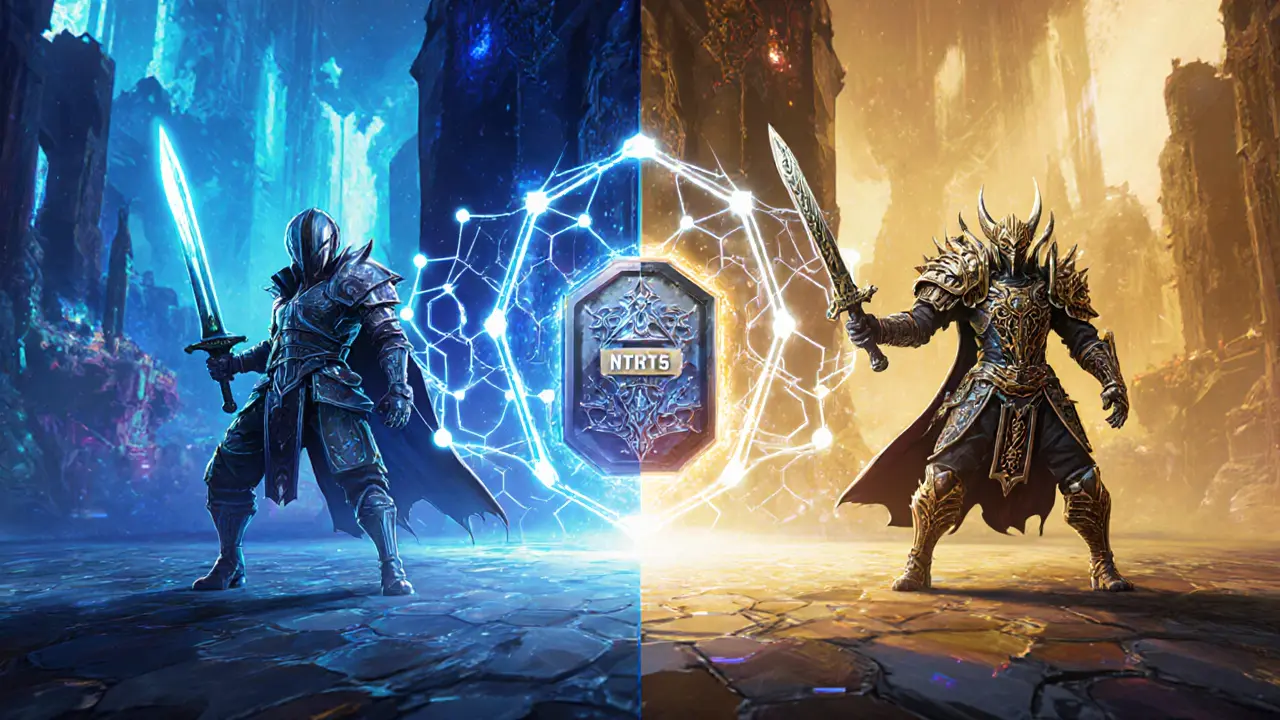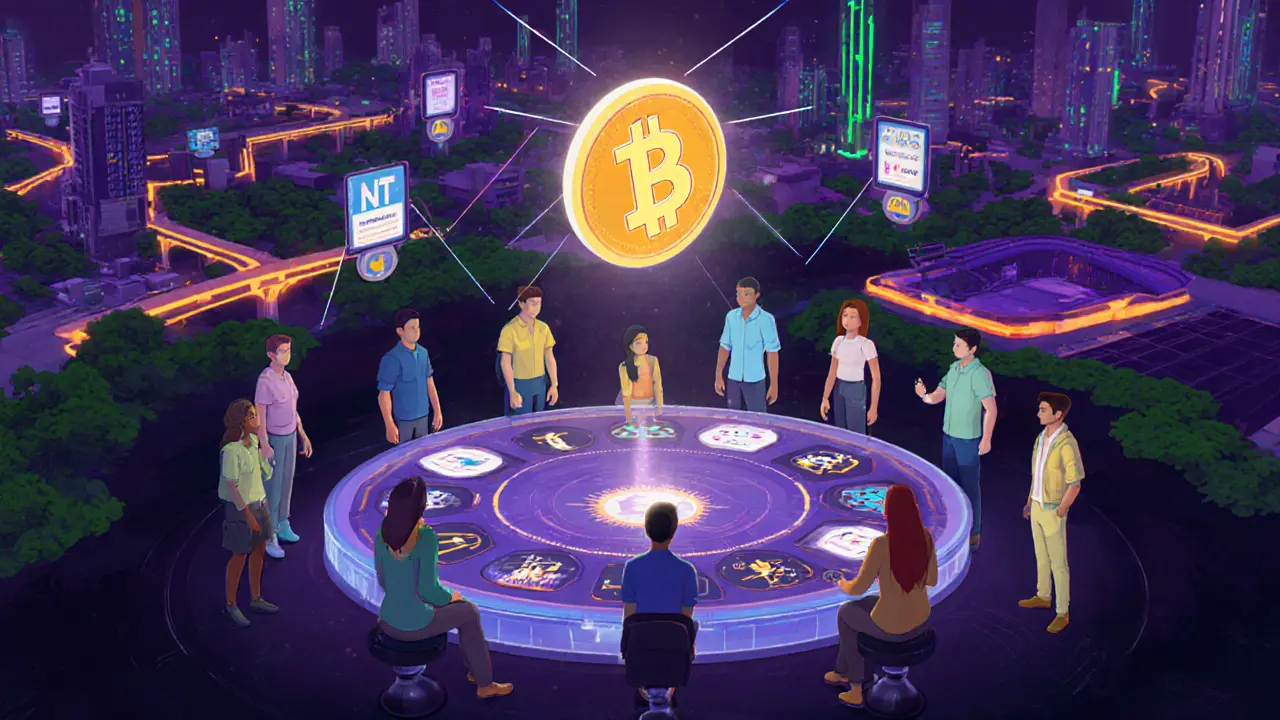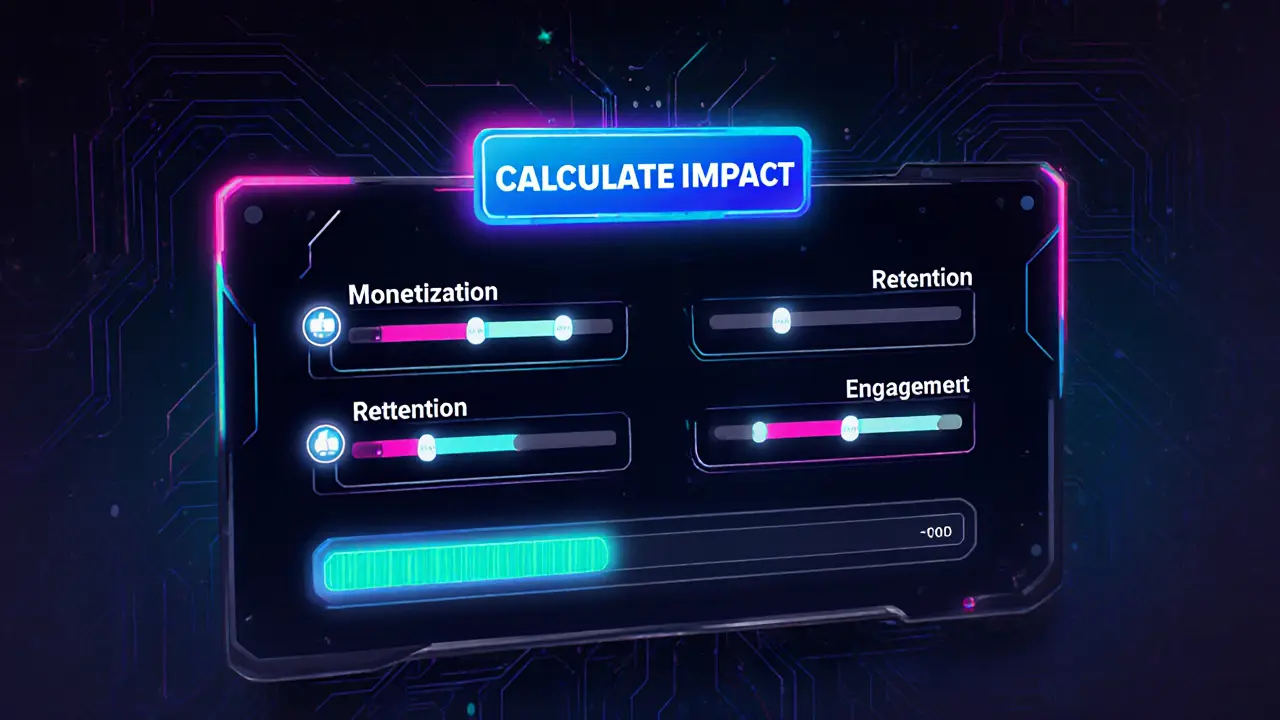NFT Game Development Impact Calculator
Your NFT Development Impact Score
Key Benefits of NFT Integration
Royalty Streams
Earn ongoing income from secondary sales of digital assets.
Interoperability
Assets move between compatible games, reducing user acquisition costs.
Player Ownership
Higher engagement and retention through true asset ownership.
Metaverse Readiness
Future-proof your game for virtual worlds and digital economies.
Quick Take
- NFTs create ongoing royalty streams, turning one‑time sales into perpetual revenue.
- Assets built on blockchain can move between games, slashing user‑acquisition costs.
- True ownership boosts player retention and fuels vibrant communities.
- AI‑driven dynamic NFTs unlock personalized, evolving gameplay.
- Integrating NFTs readies a title for the metaverse and future‑proofs it.
Game developers are always hunting for fresh ways to monetize, retain players, and stand out in a crowded market. In 2025, NFTs are no longer a buzzword; they are a toolbox that lets creators turn digital items into tradable, scarce assets. Below is a deep dive into why NFTs matter to developers, how they reshape business models, and what you need to know before jumping in.
Monetization Reimagined: Royalties, Drops, and Ongoing Income
Traditional games rely on up‑front purchases, subscriptions, or micro‑transactions that stop generating money once a player stops buying. NFT gaming adds programmable scarcity and automatic secondary‑sale royalties. When you mint a weapon skin as an NFT, you set a royalty rate-often 5‑10%-that’s automatically paid to you each time the item changes hands on the open market. This creates a revenue stream that lasts as long as the asset is traded, funding post‑launch content, live‑ops, or even new game projects.
Limited‑edition drops become a powerful pre‑launch tool. By releasing a batch of 1,000 unique avatar NFTs, you can gauge demand, raise capital, and build hype before the game ships. Early adopters feel a sense of exclusivity, while developers secure funds without giving up equity.
Cross‑Game Interoperability: One Asset, Many Worlds
Imagine a player buying a legendary sword in Game A and then wielding the same sword in Game B, preserving its stats and history. That’s the promise of interoperable NFTs assets built on open blockchain standards like ERC‑721 or ERC‑1155. Because the token lives on a public ledger, any game that recognises the token contract can read its metadata and apply it.
For developers, this means you can tap into existing player bases. A partnership with another studio lets you import each other’s NFTs, instantly expanding your audience and reducing user‑acquisition costs. Interoperability also encourages collaborative ecosystems where multiple titles share a common economy, much like the early Steam Workshop but with true ownership and tradeability.
Player Engagement Through True Ownership
When players know they own an item outright, they treat it differently. Ownership translates into higher emotional investment, longer play sessions, and willingness to spend on upgrades. The shift from "play‑to‑earn" (P2E) to "play‑to‑own" (P2O) removes the inflationary pressure of in‑game currencies and gives players a tangible stake in the game’s success.
Community‑driven marketplaces spring up around popular titles, where players trade, rent, or even lease NFTs. This secondary market activity keeps the game visible, fuels word‑of‑mouth, and creates a feedback loop: the more valuable the assets, the more players stay engaged, and the more trading volume the game earns in royalties.
Dynamic, AI‑Powered NFTs: Personalization at Scale
Static collectibles are just the beginning. Developers can program NFTs to evolve based on player behaviour. Using AI models, an NFT character could gain new abilities after winning a tournament, or a piece of land could unlock resources as the owner builds structures. These dynamic NFTs are smart contracts that can update metadata in response to on‑chain events turn every item into a living part of the game world.
Dynamic NFTs open up new gameplay loops: a staking mechanism could let players lock their NFTs to earn rewards, while the NFT’s visual representation changes to reflect accrued value. This blends traditional game design with decentralized finance (DeFi) concepts, giving developers a playground for innovative genres.

Metaverse Integration and Future‑Proofing
The metaverse is no longer a distant vision; it’s a collection of interconnected virtual spaces where NFTs act as the passport. By building your game on a blockchain that’s already embraced by major metaverse platforms, you ensure that your assets can travel to social hubs, virtual stores, or even AR experiences. This cross‑realm utility future‑proofs your title, keeping it relevant as the digital landscape expands.
Beyond pure gaming, NFTs enable in‑game economies to power real‑world commerce-think virtual concerts, branded merchandise, or NFT‑based ticketing for events hosted inside the game. Developers become platform owners, not just content creators.
Technical Foundations and Development Considerations
Implementing NFTs adds a blockchain layer to your tech stack. You’ll need to choose a network (Ethereum, Polygon, Solana, etc.), write smart contracts self‑executing code that defines NFT minting, transfers, and royalty logic, and integrate wallet support for players.
Security is paramount. Smart contracts must be audited to prevent exploits, and developers should follow AML and KYC guidelines where required. On the front‑end, you’ll need wallet providers like MetaMask or WalletConnect, plus a seamless UI that abstracts the blockchain complexity for mainstream gamers.
Fortunately, a growing ecosystem of SDKs, plug‑and‑play middleware, and open‑source templates reduces the overhead. Platforms such as Alchemy, Moralis, and Unity’s Web3 Toolkit let you focus on gameplay while handling node infrastructure, gas optimization, and token standards.
Community Building and Decentralized Governance
NFTs naturally invite community participation. By issuing a governance token alongside your NFTs, you can form a DAO (Decentralized Autonomous Organization) that lets players vote on future features, balance changes, or even revenue allocation. This democratic model strengthens loyalty: players who have a say in the roadmap are more likely to stay active and promote the game.
Token‑based rewards also incentivize community‑generated content. Artists can submit new skin designs, and if the community votes them in, the creator receives a share of future royalties. This crowdsourced pipeline reduces development costs and accelerates content pipelines.
Comparing Traditional vs. NFT‑Powered Game Economies
| Aspect | Traditional Model | NFT‑Enhanced Model |
|---|---|---|
| Revenue source | One‑time purchase, subscriptions, micro‑transactions | Initial sale + secondary‑sale royalties |
| Asset ownership | Server‑controlled, revocable | Player‑owned, transferable on blockchain |
| Cross‑game utility | Rarely supported | Interoperable across compatible games |
| Community involvement | Feedback loops via forums, surveys | DAO governance, token‑based voting |
| Risk profile | Market saturation, user churn | Regulatory compliance, smart‑contract bugs |
Common Pitfalls and How to Avoid Them
- Underestimating gas fees: Choose low‑cost networks or layer‑2 solutions to keep transactions affordable for players.
- Skipping smart‑contract audits: Even a tiny bug can expose assets to theft. Use reputable auditors.
- Neglecting user experience: Hide wallet complexity behind a simple UI; consider custodial wallet options for newcomers.
- Ignoring regulations: Stay updated on AML, KYC, and tax obligations in each jurisdiction you serve.
- Launching without a clear value proposition: NFT items must offer functional or aesthetic benefits beyond mere collectibility.
Next Steps for Developers Ready to Dive In
- Define the game mechanic that will benefit from NFT ownership (e.g., unique characters, land, weapons).
- Select a blockchain that aligns with your audience’s tolerance for fees and environmental concerns.
- Prototype a smart contract using an open‑source template; run a test‑net deployment.
- Integrate wallet support and build a marketplace UI that feels native to the game.
- Plan a launch strategy: teaser drops, community AMAs, and DAO formation for post‑launch governance.
By following these steps, you’ll turn NFTs from a hype buzzword into a concrete engine for sustainable growth, deeper player bonds, and a foothold in the emerging metaverse economy.

Frequently Asked Questions
Do I need to be a blockchain expert to add NFTs?
No. Many SDKs and middleware handle the heavy lifting. You’ll still need a basic grasp of wallets, gas fees, and smart‑contract basics, but you can outsource the code to specialists or use plug‑and‑play solutions.
How do royalties work on secondary sales?
When you mint an NFT, you set a royalty percentage in the contract (commonly 5‑10%). Every time the token is transferred on a compliant marketplace, the contract automatically forwards that slice of the sale price to your wallet.
Can NFTs be used in a free‑to‑play game?
Absolutely. You can sell optional cosmetic NFTs, premium skins, or vanity items while keeping the core gameplay free. This hybrid model balances accessibility with revenue potential.
What are the environmental concerns and how do I address them?
Choose energy‑efficient chains (e.g., Polygon, Solana) or layer‑2 solutions that use proof‑of‑stake. Some projects also offset emissions through carbon‑credit purchases.
How can I involve my community in NFT decisions?
Issue a governance token alongside your NFTs and set up a DAO. Use voting portals where token holders decide on new asset drops, game balance tweaks, or revenue sharing models.


16 Responses
This whole NFT hype is just a circus of glittery promises 😂🚀
I can see the potential in using NFTs for true ownership, but developers need to balance it with player experience. Overcomplicating the UI can drive players away, so keep the integration seamless.
Listen, the soul of gaming has always been about freedom, and NFTs are the newest chain that can bind that freedom to verifiable scarcity. When a player owns a sword on the blockchain, that sword travels beyond the confines of a single title, echoing the ancient wanderers of myth. This is not merely a marketing gimmick; it is a philosophical shift from the centralised control of assets to a distributed stewardship. The blockchain acts as a ledger of memory, a digital pantheon where each token carries its own saga. Imagine a world where the triumphs of a battle are etched onto an NFT, allowing future avatars to inherit the legends of their predecessors. Such continuity can awaken a deeper emotional resonance, turning casual play into a lineage‑building experience. Moreover, the automatic royalty mechanisms embed a perpetual incentive for creators, aligning their fortunes with the community’s success. The very notion of “play‑to‑own” replaces the hollow thrill of micro‑transactions with genuine investment. Yet, this promise carries weight: developers must guard against unauthorised duplication and ensure that gas fees do not become a barrier to entry. Selecting a layer‑2 solution or a low‑cost chain can preserve accessibility while retaining the benefits of decentralisation. Community governance through DAOs can further democratise decision‑making, granting players a voice in the evolution of the game’s economy. This participatory model mirrors the early guild systems, where artisans collectively steered their craft. In practice, a well‑designed NFT system becomes a living ecosystem, not a static storefront. It invites modders, traders, and storytellers to co‑create, expanding the world beyond the developer’s original vision. Finally, the metaverse convergence means today’s NFT can become tomorrow’s avatar, land, or even ticket, ensuring relevance as virtual realities intertwine. In short, NFTs are the keystone that can bridge present gameplay with future digital societies, provided we wield them with foresight and humility.
Oh sure, because everyone loves a "revolution" that makes wallets pop up at every menu. 🙄
While the philosophical allure is captivating, we must scrutinise the pragmatic ramifications. The integration of token standards such as ERC‑1155 demands rigorous testing to avert replay attacks and ensure metadata integrity. Furthermore, latency introduced by blockchain confirmations can degrade the responsiveness users expect from real‑time combat. Developers should therefore employ optimistic roll‑ups or sidechains to reconcile speed with security, lest the experience devolve into a sluggish ledger‑check. Lastly, the legal landscape surrounding digital ownership is still in flux, and a prudent studio will consult counsel before issuing transferable assets.
Royalty streams are cool, but dont forget tax stuff. No one wants the IRS knocking.
Totally agree that keeping the UI smooth is key. When you make the blockchain feel like a natural part of the game, players stay engaged and the community thrives.
One must appreciate the elegance of a well‑crafted smart contract; it is the quintessence of digital artistry, far beyond the pedestrian designs of mainstream studios. 🧐
Don't you see? The whole blockchain agenda is a covert operation to install a digital oligarchy. They want to track every move we make in games, turning fun into surveillance. And the so‑called "interoperability" is just a Trojan horse for data mining. Wake up, people!
Sure, the grand conspiracy is real, but maybe the real issue is just poorly designed economies. A little balance work could fix most of those woes.
For developers just starting out, I recommend prototyping your NFT contract on a testnet like Mumbai before moving to mainnet. This approach lets you catch bugs early, estimate gas costs, and refine your UI without risking real funds. Also, consider using existing SDKs such as Moralis or Alchemy to simplify wallet integration and node management. By following these steps, you can focus on gameplay while maintaining a secure and scalable blockchain layer.
Honestly, the hype train is just another way to sell dreams wrapped in code. People think owning a pixel‑perfect sword will solve their existential dread, but at the end of the day it's just a glorified status symbol.
🙄 Yeah, because nothing says "meaningful gameplay" like juggling private keys while trying to slay a dragon.
Listen up, upcoming devs! If you want to stand out, embed NFTs that actually change gameplay, not just decorative trinkets. Give your community a reason to trade and earn, and they'll become your biggest ambassadors.
Seriously, the market is already saturated with meme NFTs. To cut through the noise, you need utility that impacts core loops – otherwise it's just digital litter.
While you both dismiss the broader potential, let me assert that a well‑designed NFT economy can generate a self‑sustaining revenue model, provided the tokenomics are balanced and the community governance is transparent. Ignoring these fundamentals will only lead to speculative bubbles and eventual disappointment.